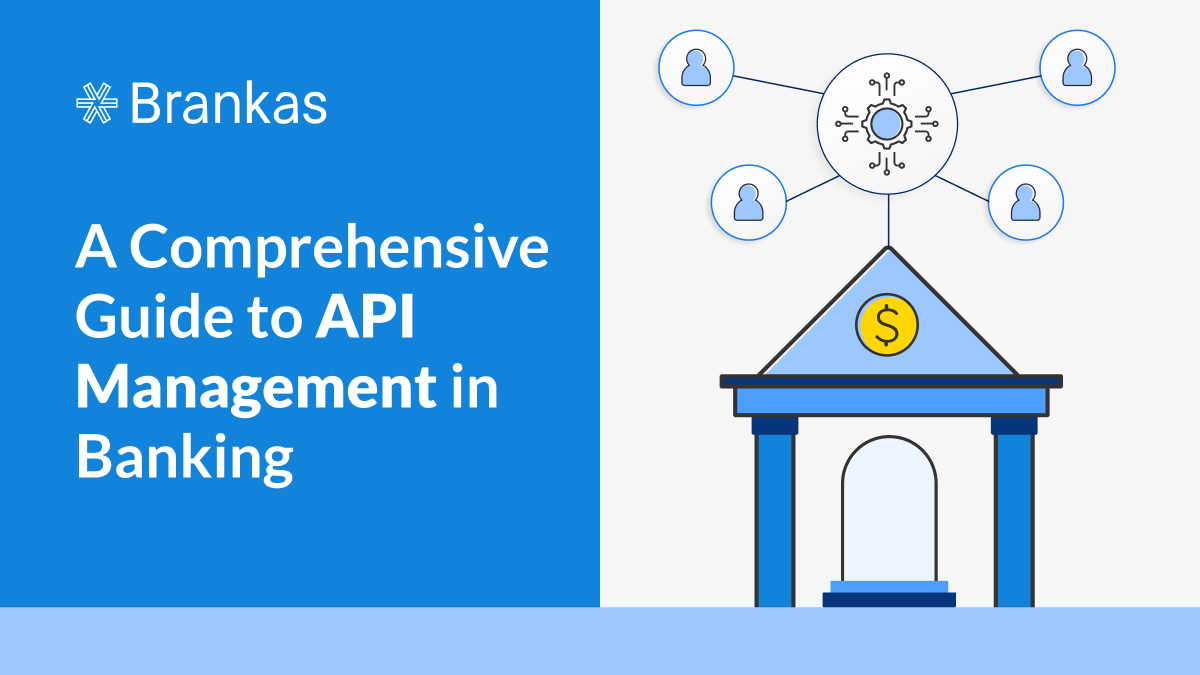A Comprehensive Guide to API Management in Banking
Staying ahead in banking means embracing innovations that enhance efficiency, security, and customer experiences. One technology that has become a cornerstone of modern banking is the strategic implementation of APIs (Application Programming Interfaces) and their meticulous management.
APIs facilitate the exchange of information between different software applications. This communication is vital in the banking sector for streamlining operations, introducing new services, and ensuring the security of sensitive financial data.
Consider the scenario of a customer using a mobile banking app to transfer funds. APIs enable the app to communicate with the bank’s servers to ensure the transaction is secure, swift, and accurately reflected in the customer’s account. The smooth experience consumers enjoy is made possible by robust API management.
Key Aspects of APIs in Banking
Grasping the fundamentals of APIs is essential to appreciate how financial institutions integrate their systems and services. Let’s break down the key aspects:
Definition and purpose:
An API (Application Programming Interface) serves as a bridge between different software applications. In banking, APIs act as digital intermediaries, enabling diverse systems to communicate and share data securely. The primary goal of APIs is efficiency.
When a customer applies for a loan through an online platform, APIs facilitate the secure transmission of application data to the bank’s systems. These APIs enable real-time credit checks, customer information verification, and automated decision-making, resulting in an almost instantaneous response to the loan application. This integration of APIs transforms the traditional loan approval process, offering customers a quicker and more efficient experience.
Types of Banking APIs:
- Internal APIs facilitate communication between different internal systems within a bank to enhance operational efficiency. For instance, linking the customer database with the transaction processing system.
- External APIs enable interaction with external entities. This could involve connecting with third-party services like payment gateways or credit bureaus. Integrating payment gateways such as Brankas ensure secure financial transactions, while interfacing with credit bureaus help obtain relevant credit information.
The Role of API Management
API management plays a critical and multifaceted role in the banking sector. It ensures the smooth operation, security, and efficiency of digital interactions between various systems and applications. API management involves overseeing the entire lifecycle of APIs, from creation and deployment to monitoring and updates. It is strategic and indispensable in banking where the stakes are high due to the sensitive nature of financial data.
One fundamental aspect of API management is ensuring the security of data transmitted between systems. Robust encryption, authentication protocols, and access controls are implemented to safeguard against unauthorized access or data breaches. This is particularly vital in banking where customer trust is paramount and regulatory compliance is non-negotiable. API management tools act as gatekeepers, meticulously verifying the identity of users and devices interacting with the APIs to prevent any compromise of sensitive information.
API management enhances the efficiency of banking operations by providing a centralized platform for developers and administrators to monitor, analyze, and optimize API performance. This includes tracking the usage of APIs, identifying potential bottlenecks, and ensuring that the APIs align with the overall business objectives. This level of control and visibility enables banks to proactively address issues, minimize downtime, and optimize resource allocation.
Transformation is a constant in digital financial services. API management facilitates integration with emerging technologies. Whether incorporating artificial intelligence for data analytics or integrating blockchain for enhanced security, API management ensures these technologies harmoniously coexist within the existing banking infrastructure. This adaptability positions banks at the forefront of innovation, offering customers cutting-edge services and experiences.
API management tools play a pivotal role in orchestrating seamless communication between diverse systems and applications in the dynamic and security-sensitive banking ecosystem. The effectiveness of these tools is often determined by their key features. Each addresses critical aspects of security, developer experience, and integration capabilities.
Key features collectively empower API management tools to be the backbone of secure, efficient, and interoperable digital communication banking. They address the technical intricacies of API management and prioritize the human element to ensure developers can leverage these tools effectively.
Security Measures
- Encryption and authentication
API management tools prioritize the secure transmission of data by implementing robust encryption protocols. This involves encoding sensitive information during transit, ensuring that even if intercepted, it remains indecipherable to unauthorized parties.
Authentication mechanisms are employed to verify the identity of users and systems interacting with the APIs. This two-pronged approach—encryption for data in transit and authentication for secure access—establishes a strong foundation for protecting the confidentiality and integrity of financial data.
- Access control and authorization
Granular control over who can access specific APIs and what actions they can perform is a critical security aspect. API management tools incorporate access control and authorization features to define and enforce policies governing API usage. This includes specifying which users or applications have permission to access certain resources and what operations they are allowed to execute. This fine-grained control prevents unauthorized access and ensures compliance with regulatory requirements by restricting sensitive operations to authorized entities.
Developer-Friendly Interfaces
- User experience for developers
API management tools prioritize a user-friendly interface by recognizing the diverse skill sets and backgrounds of developers. This involves intuitive dashboards and easy navigation, reducing the learning curve for developers who need to interact with APIs. Providing a seamless experience encourages developers to efficiently create, deploy, and manage APIs, fostering a collaborative environment that accelerates development cycles.
- Documentation and support
Clear and comprehensive documentation is crucial for developers to understand how to use APIs effectively. API management tools include thorough documentation that outlines endpoints, parameters, authentication processes, and response formats. Robust customer support ensures that developers have access to assistance when facing challenges or seeking guidance. This support infrastructure, whether through documentation or responsive support channels, empowers developers to leverage APIs without unnecessary hurdles.
Integration Capabilities
- Legacy system integration
Recognizing that many banks operate with legacy systems, API management tools are designed to facilitate seamless integration. They act as a bridge between modern, API-enabled applications and older, legacy systems, ensuring that data flows smoothly across the entire technology stack. This capability is crucial for banks looking to modernize without disrupting existing operations.
- Support for various data formats
Banking transactions involve diverse data formats. API management tools accommodate this diversity by supporting multiple data formats such as JSON, XML, and others. This flexibility ensures that APIs can communicate effectively with different systems, regardless of the data format they use. It simplifies the integration process and promotes interoperability between various applications and services within the banking ecosystem.
Implementation of API Management in Banking
Implementing API Management in the banking sector requires a strategic and collaborative approach that aligns technology initiatives with overarching business goals. Successful implementation involves a combination of best practices, ensuring that the integration of APIs is seamless, secure, and optimized for performance.
Best Practices
- Collaboration between IT and business teams
A collaborative approach ensures that API implementation aligns with the broader strategic goals of the bank. Here’s how this collaboration unfolds:
a. Alignment with business objectives- The IT team must have a deep understanding of the business objectives driving the need for API integration. Regular communication and collaboration with business leaders ensure that APIs are developed and deployed with a clear focus on enhancing customer experiences, improving operational efficiency, or addressing specific business challenges.
b. Joint decision-making- Decisions regarding which APIs to prioritize, the level of security required, and the performance metrics to be achieved should be made collectively. This joint decision-making process ensures IT and business teams have a shared understanding of the priorities and constraints to foster a sense of ownership and commitment to the success of API implementation.
c. Agile development practices- Collaboration enables adopting of agile development practices, allowing for iterative development and quick adaptation to changing business needs. This flexibility is crucial in banking, where market demands and regulatory requirements can evolve rapidly.
- Testing and Monitoring Procedures
Rigorous testing and continuous monitoring are central to successful API management implementation. These practices are essential for identifying and addressing potential issues and ensuring the reliability and security of the integrated APIs.
a. Comprehensive testing protocols- Thorough testing is essential before deploying APIs into a live environment. This includes functional testing to verify that APIs perform as intended, security testing to identify and mitigate vulnerabilities, and performance testing to assess how APIs handle varying levels of traffic.
b. Real-time monitoring- Once deployed, APIs must be monitored continuously in real-time. Monitoring tools track key performance indicators, such as response times, error rates, and usage patterns. Real-time insights allow for proactive issue resolution, minimizing downtime and optimizing the overall user experience.
c. Security audits and compliance checks- Regular security audits and compliance checks are integral to API management. These ensure that APIs adhere to industry regulations and internal security policies. Constant monitoring for security threats, coupled with prompt remediation, safeguards against potential breaches.
d. Scalability testing- As banking operations scale, API management must be capable of handling increased loads. Scalability testing assesses how well the system can accommodate growing volumes of data and user interactions, ensuring that the infrastructure remains robust under varying levels of demand.
The successful implementation of API management in banking requires a holistic approach that bridges the gap between technology and business objectives. By fostering collaboration between IT and business teams and implementing rigorous testing and monitoring procedures, banks can ensure that their API integrations are technically sound and aligned with strategic goals, secure, and adaptable to the dynamic nature of the financial industry.
Common Challenges in API Management
Implementing and managing APIs in the banking sector comes with its share of challenges, particularly in security and regulatory compliance. Addressing these challenges requires strategic planning and the adoption of robust solutions and mitigation strategies.
- Security Concerns
The foremost concern in API management for banks is the security of sensitive financial data. As APIs facilitate the exchange of information between various systems, they become potential points of vulnerability. Common security challenges include:
Data breaches
The risk of unauthorized access leading to data breaches is a significant concern. If inadequately protected, APIs can expose confidential customer information, posing a serious threat to the bank’s reputation and customer trust.
API key management
Improper handling of API keys, which act as authentication credentials, can lead to unauthorized access. If API keys are compromised, malicious actors can exploit vulnerabilities within the API.
- Regulatory Compliance
Regulatory frameworks, such as GDPR, PSD2, and other financial industry-specific regulations, impose strict guidelines on how banks handle and secure customer data. Non-compliance can result in hefty fines and damage to the bank’s reputation. Key challenges include:
Data governance
Ensuring that data transmitted through APIs adheres to regulatory standards requires meticulous governance. Managing consent, data retention, and ensuring data integrity become complex tasks.
Dynamic regulatory environment
The financial industry is subject to frequent regulatory updates and changes. Keeping abreast of these changes and ensuring that APIs remain compliant with evolving standards is a constant challenge.
Solutions and Mitigation Strategies
Banks can navigate the intricate landscape of API management by adopting these solutions and mitigation strategies. This proactive approach safeguards against potential risks and fosters a culture of continuous improvement and compliance within the organization.
- End-to-end encryption- Implementing end-to-end encryption ensures that data is encrypted throughout its entire journey, from the source to the destination. This safeguards against interception and unauthorized access.
- OAuth and Tokenization- Utilizing OAuth for secure authentication and tokenization for handling sensitive data reduces the risk of unauthorized access. OAuth facilitates secure authorization processes, while tokenization replaces sensitive data with non-sensitive equivalents.
- Regular security audits- Conducting regular security audits and vulnerability assessments helps identify and address potential weaknesses in the API infrastructure. This proactive approach ensures that security protocols remain effective against emerging threats.
- Automated compliance monitoring- Deploying automated tools for compliance monitoring streamlines the process of ensuring that APIs adhere to regulatory requirements. These tools can provide real-time alerts and reports, enabling prompt action in case of non-compliance.
- Audit trails and documentation- Maintaining comprehensive audit trails and documentation of API transactions is essential for demonstrating compliance. This documentation includes details about data access, consent management, and any modifications made to the API structure to align with evolving regulations.
- Regular training and awareness programs- Keeping staff informed about the latest regulatory requirements through regular training programs ensures that everyone involved in API management is aware of their responsibilities in maintaining compliance.
The significance of API management as a catalyst for transformative change is unmistakable. API management streamlines operations, fortifies data security, and acts as a crucial bridge between technology and strategic business objectives. It facilitates collaborative efforts between IT and business teams to ensure that innovation aligns seamlessly with overarching goals. Despite the challenges posed by security and regulatory compliance, robust solutions emphasize that API management is not just a technological necessity but a strategic necessity for modern banking. The call to action is clear: financial institutions must wholeheartedly embrace API management to lead the charge in shaping the future of banking, fostering agility, security, and innovation in the industry.


